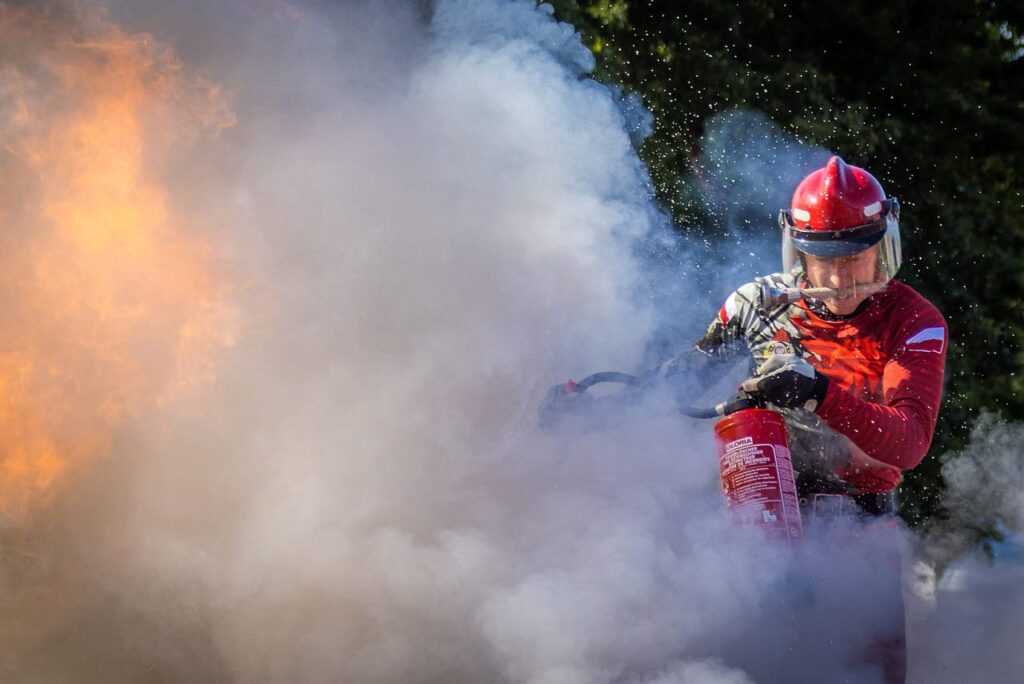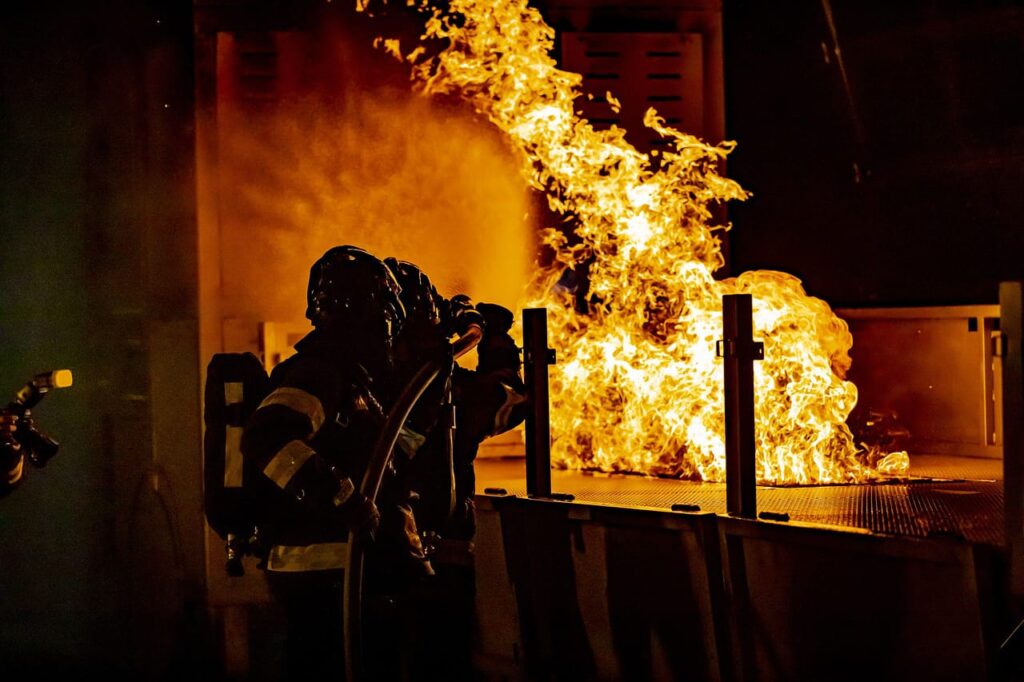Fire Protection System
According to the International Code Council, fire protection systems are approved devices used to alarm, extinguish, detect, or control smoke and fires. They encompass measures and practices to reduce or prevent property loss and injury from fires. Active fire protection systems, like sprinklers and alarms, respond directly to fires, while passive measures, such as inhibiting fire spread and fire-rated walls, are passive measures.
By Protecting building occupants from all sorts of emergencies, life safety systems include essential considerations, not just fires. The term is broader than covering non-fire emergencies such as power outages or chemical leaks, fire protection, and, more specifically, its focus on preserving lives.
While also supporting fire protection measures, life safety systems ensure safe evacuation during crisis totprotectan life during critical building system failures or emergencies.
A life Safety system facifacifacility’seewing facilfacifacility’ss
- Mass Notification Systems
- Fire Alarm & Detection System
- Access Control System
- Alarm & Security Monitoring
- Emergency & Exit Lighting
- Fire Extinguishers
10 FIRE SAFETY TIPS
- Install fire protection
Smoke alarms are your best early warning system in a fire. Install smoke alarms on every level of your home, including the basement and outside each sleeping area. If you sleep with the door “used” install one inside your sleeping area”
“I”ne”er “n alarm ” chi” “”o”i”a”low battery power, test alarms every month and replace batteries once can’tcan’can’tararalarm can’tcan’t”can’t”t”, sos” “larm borr”ow”””a s”ok” “larmalaalarm’s’sor another use. More than 10 years old, replace all alarms. Consider installing an automatic fire sprinkler system for complete home protection.
- Plan your escape from fire.
You have to get out fast if a fire occurs in your home. An escape plan in advance: sadvance:with your family and work out, including windows. From every room, be sure everyone knows at least two unobstructed exits. ( Use the stairs, not the elevator, to escape for if you live in an apartment building.) Outside of home, decide on a meeting place. At least twice a year, have your entries household practice your escape plan. - Keep an eye on smokers.
In North America, careless smoking is the leading cause of fire deaths. Smoking in bed is drowsy and could be fatal. Before going to sleep or leaving home, provide the smoker with a deep, extensive, non-tip ashtray and soak butts with water. After someone has been smoking, check under the cushion and around upholstered furniture for smoking cigarettes before going to sleep or leaving home. - Remember: matches and lighters are tools, focanfocanfocan’tltsts kids can’tcan’tcan’t’th them, preferably in a locked cabinet, use only child-resistant lighters and store all matches and lighters up high. For grown-ups only, teach children that matches and lighters are tools. If they find matches or lighters, teach young children to tell a Grown-up; older children should immediately ring matches and lighters to adults.
- Kitchen Safety
Stay near cooking to monitor it closely. When you Cook Wear clothes with shorts and keep cooking areas clear of combustibles, rolled-up, or tight-fitting sleeves. Turn pot handles inwards ononcanon’tstoveve you chilcan’tcan’t’tn’t them or’tn’t them around your kitchen range. Slide a lid over the pan to smother the flames and turn off the heat source if grease catches fire in a pan. Leave the lid on until the pan is entirely excellent. - Give space heaters space.
Keep portable and space heaters at least three feet away from anything that can burn. Turn them off when you leave home or go to sleep, and keep children and pets away from heaters. - Use electricity safely
Unplug it immediately, then have it serviced before using it again. An electronic appliance smokes or smells. If it is cracked or frayed, replace any electronic cord. - Cool a burn
10 to 15 minutes, run cool water over a burn. Never apply ice. Never put grease or butter on a burn. See a doctor immediately if the burned skin blisters or is charred. - Crawl low under smoke.
Use an alternative escape roroutefifou encounter smoke whwhile cappingrom a fire. Crawl on your hands and knees, keeping your head 12 to 24 inches above the floor, where the air will be cleaner if you must esescDon’Don’won’won’troughghhsDon’t - sDon’t’t, drop,and roll..Don’t’ton’tf your clothes catch fire. Drop to the ground, stop where you are, cover your face with your hand,, anroll over and over to smother the flames.
With the water and call for help.
Standards and Regulations
Property managers, owownersand occupants must be familiar with the applicable ststandards and regulations in their jurisdictions Compliance helps create a safer environment ,protects lives and property, rand reducesthe risk of fires.
What are the Different Stages of a Fire?
You must be familiar with the four main phases of fire to effectively carry out safety steps and protocols and to understand what you can do during each stage.
Incipient stage – The fire is often limited to the materials or area of origin, small and localized at this stage, and smoke production is usually minimal. Fires in the embryonic stage can be quickly extinguished If detected and addressed promptly,::The stagee – the fire starts to intensify as it consumes more fuel and genera, and the fflait’sbecflait’sbecomeait’s.it’s, Hencit’st’s vital to prevent it from reaching the full developed stage and take immediate action to control its spread.
Fully developed stage—At this most dangerous and destructive phase of a fire, there is a high risk of flashover (a sudden ignition of combustible gases and materials in the environment), which may compromise structural elements. During this stage, Firefighting efforts should prioritize evacuation.
Decay stage – the heat output and smoke production decrease, and the flames weaken. However, pockets of heat make it essential to extinguish the fire and ensure it does not reignite fully; hidden fire may still exist,
FFirit’szarFirit’szardst For
iit’sit’s cit’sal to know the fire hazards to look out for
Apart from being aware of the various stages of a fire, this can help organizations create an effective fire safety system, and individuals can take proactive measures.
The following are some common examples of fire hazards in workplace, residential, or public settings:
Electrical hazards – faulty wiring, damaged electrical cords, overloaded circuits, and malfunctioning electrical equipment
Cooking-related hazards – unattended cooking, grease buildup, and misuse of cooking appliances
- Heating sources – improper use of heating devices like fireplaces, portable heaters, and wood-burning stoves
- Flammable chemicals and liquids – paint thinners, gasoline, and solvents
- Smoking – careless smoking materials and disposal of cigarette butts
- Open flames – incense, unattended candles, and open flames
- Flammable materials – textiles, paper, cardboard, and flammable gasses


